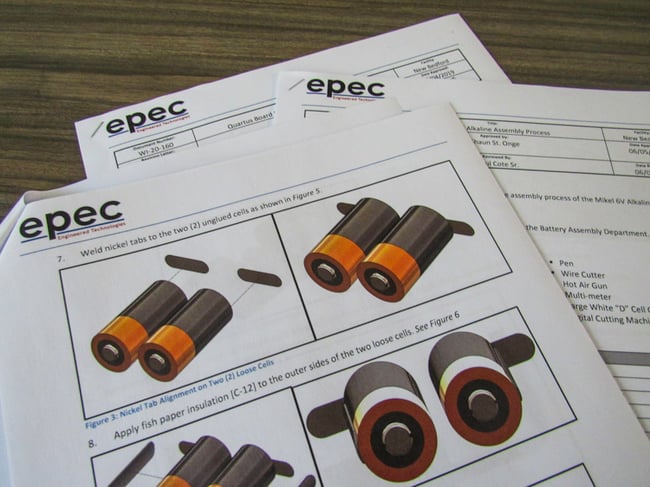Maybe you have heard of technical writing before, or maybe this is your first-time hearing about it. The chances are good, however, that you have seen or experienced technical writing already in your life. It is an established practice within the industrialized world, but what is it?
Technical writing is the practice of conveying your ideas in a clear, logical, and concise way. Consider any instruction manual you have ever had to follow. The instructions are usually quite blunt, to the point, and easily understood. It seems intuitive, right? Who would want the instruction manual to drag on and on with more information than one needs to accomplish its goal? Technical writing is also a useful tool for reporting. Not like news reporting, but rather when one needs to write a technical report, that person will more than likely employ technical writing.
Whether it’s a summary report on one’s research project or just a standard lab test report, technical writing enables us to share important data with one another directly and clearly. You might think technical writing is easy enough to pick up, but if you have never actually written that way, you may be in for a surprise.

Example of Epec’s Work Instruction Documents
Where to Start When Trying to Perfect Technical Writing
Begin by evaluating how many “filler” words you use in whatever it is you are writing. We all know the common filler words from everyday writing such as “very,” “really,” or “you know.” Now we need to add words like “the” and “it” to that list in order to improve our technical writing.
For example, compare the next two sentences:
- Insert the peg marked with the letter “A” into the slot with the corresponding letter on it.
- Insert peg marked with letter “A” into slot with corresponding letter.
All we have done from sentence 1 to sentence 2 is remove the instances of “the” and “it.” Both sentences still read the same way and convey the same message: the peg labeled “A” has to go into the slot labeled “A.”
We can further maximize our technical writing skills by cleaning up sentence 2 a little more:
- Insert peg “A” into slot “A.”
Now we have a clear, direct, and concise instruction in which we can build to/work from. Once you can write similarly to how sentence 3 looks, the only improvement that can be made to your writing is adding supporting visual aids. Albeit simple, sentence 3 is the ultimate goal for one’s technical writing ability.
Repetition
For the most part, technical writing is not something anyone just starts excelling at right away. It takes a reasonable amount of practice as it is an entirely new way of conveying ideas/instruction. I was able to practice technical writing through my schooling, and it has proven to be a useful tool now that I am finished with school and immersed in the manufacturing world.
Most, if not all, of my technical writing goes into writing work instructions for the production floor. It is important that the instructions are clear and easily understood because if they are not, then there is either a risk that bad product can leave the facility or production needs help interpreting the instructions to the point where now on-time delivery may be affected, or maybe even both.
Metric for Proficiency
So how do you know exactly where your technical writing skills are compared to where you want/need them to be?
A good metric for whether you are proficient at technical writing is to try writing an instruction (the simpler the better for our purposes here) and handing it to a friend or family member to complete. If your volunteer can complete the task you have outlined with minimal questions/confusion, you are off to a great start towards perfecting your technical writing.
If they could not complete your task, what was the problem? Or perhaps they incorrectly completed it, indicating your instruction was pretty good, but could have been more specific or detailed. Being as bluntly specific as possible is key to ensuring the reader is understanding what your intended meaning is/was. For example, the instruction’s intent is to have the person retrieve a spoon from the kitchen silverware drawer. Does the instruction specify which drawer? Does the instruction specify which spoon is based on size or some cosmetic detail? Without these specifics, the person being instructed may take longer to locate the spoons and/or may bring back the “wrong” spoon. Do not underestimate the value of specificity; the less room for misinterpretation, the better your technical writing will be.
Summary
Hopefully this blog post has provided you with some useful tips for effective technical writing. Remember that the fewer words used, the more direct the writing will be; you can never be too specific. Finally, once you feel that your technical writing is where it needs to be, do not forget to have someone proofread your work.
Key Takeaways
- Clarity is the foundation: Technical writing communicates ideas in a direct, logical, and concise way, removing filler words and focusing only on what is necessary for understanding.
- Conciseness improves usability: Instructions should be simplified to the most direct form possible, ideally resembling “Insert peg A into slot A,” with visuals used for further clarity.
- Repetition builds skill: Technical writing is not instinctive; consistent practice, particularly in real-world applications like work instructions, is key to developing proficiency.
- Specificity prevents errors: The fewer assumptions left to the reader, the better. Instructions must eliminate ambiguity by including necessary details such as exact location, part size, or defining features.
- Testing and feedback are essential: A strong measure of effective technical writing is whether someone unfamiliar with the task can complete it accurately and efficiently based solely on the written instructions.
















